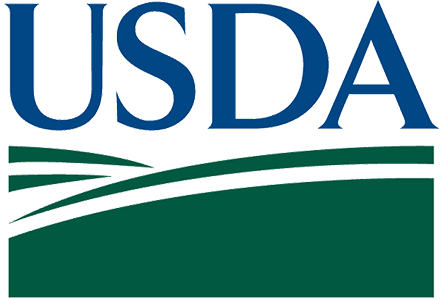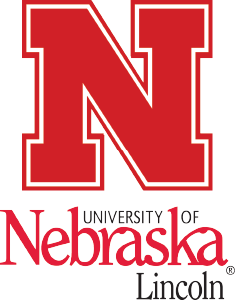AG2PI Field Day #4 - January 20, 2021
Event was rescheduled for January 27, 2021
Implementation of Genomic Selection and the Future of Phenotyping in Dairy Cattle
Rescheduled for
January 27, 2021
10:30 AM - 12:00 PM
(US Central Time)
Purpose
Discussion of genomics and phenomics research and applications in dairy cattle; including challenges in data processing and technology.
Registration
Register for the virtual field day by clicking the link below. Upon registration, you will receive a confirmation email with information about joining the meeting
Field Day RegistrationField Day Recording
Field day recording is now available, click the button below to launch and watch the recording
Watch Field Day RecordingChat Questions
Questions directed to the speakers placed in the chat can be viewed by clicking the button below
See Chat QuestionsGenomic prediction and genomic selection have revolutionized breeding programs in both animals and plants. Genomic selection was first implemented in dairy cattle, with the US leading the way. Genomic selection in dairy cattle capitalizes on extensive farm-level phenotype recording and data sharing, including between countries. This field day will focus on the implementation of genomic selection in dairy cattle, including genotyping, phenotyping, and data sharing, and associated challenges. The second part of the field day will focus on the future of phenotyping in dairy cattle using novel sensor and other technologies, along with the associated data storage, processing, and analysis challenges.
Field Day Speakers
Implementation of Genomic Selection in Dairy Cattle

The Future of Phenotyping in Dairy Cattle and Associated Challenges


Chat Questions
 Do they control for environment effects?
Do they control for environment effects?
In traditional evaluations (ones not using DNA data) the model contains an effect for management group which is cows in the same herd calving at a similar time.
 You mentioned haplotypes affecting fertility, early embryonic death. Can you elaborate a bit more on that?
You mentioned haplotypes affecting fertility, early embryonic death. Can you elaborate a bit more on that?
The 30 cattle chromosomes are divided into over 600 segments. Imputation gives us the alleles for each of the animal's 2 haplotypes for each segment. If we never find an animal that has the same haplotype from both parents and the haplotype frequencies indicate we should, we assume that there is a lethal that prevents the birth of a live calf. We confirm our hypothesis by seeing if particular ratings of carrier bulls to daughters of carrier bulls have depressed fertility. We assume that the homozygous state causes early embryonic death because we have not received reports of abortions from these matings.
 Can you please provide more information on the weighing process for the genetic-economic index and how to balance the value-added traits of the end products with the return on investment for the farmers?
Can you please provide more information on the weighing process for the genetic-economic index and how to balance the value-added traits of the end products with the return on investment for the farmers?
See Lifetime net merit for details
 A certain level of inbreeding accepted to maintain genetic gains in the traits?
A certain level of inbreeding accepted to maintain genetic gains in the traits?
Yes, an increase in inbreeding is a consequence of selection. The effects of inbreeding depression are countered by detection of deleterious recessives and use of mating programs to restrain the level of inbreeding on a DNA basis.
 Sounds a bit like spatial correction used in crop field studies
Sounds a bit like spatial correction used in crop field studies
The job of an evaluation system is to decompose the observation into the genetic component of interest and the other factors. Sometimes data is adjusted prior to the evaluation, other times the effect is included in the model.
 Does CDCB have plans to deliver genomic evaluation for SCR in the near future?
Does CDCB have plans to deliver genomic evaluation for SCR in the near future?
There is not a near term plan to do genomic evaluation for SCR. ScCR has been described as a phenotypes measure because so many other factors beside genetics determine the success of a unit of semen. There is interest in determining if there are any variants in the full genome associated with sire fertility. If significant markers are found we could report on them.
 Lizhi Wang and Guiping Hu at Iowa State University have published some interesting approaches for multi-trait selection
Lizhi Wang and Guiping Hu at Iowa State University have published some interesting approaches for multi-trait selection
Thanks for the reference. Multi-trait analysis is a powerful technique, we use it routinely in the evaluation of type traits, and is some other cases it is under consideration.
 Why importance to Milk decreased over the years and set to -1 in Index?
Why importance to Milk decreased over the years and set to -1 in Index?
As fluid milk has become a decreasing portion of the use of milk and more has gone to cheese and other manufactured produce, the volume of milk becomes a factor in the cost of hauling the milk rather than a valuable component.
 Could you please expand on your 'lesson learnt' on 'do not use data warehouse'?
Could you please expand on your 'lesson learnt' on 'do not use data warehouse'?
Currently data warehouses move towards data lakes which are more fit for ml approaches
 Why does the data 'disappear' after 5 years? We have milk records going back decades
Why does the data 'disappear' after 5 years? We have milk records going back decades
THAT IS ONLY FOR MILK RECORDINGS, RESEARCH DATA IS OFTEN GONE. The other interesting phenotypes such as Dry matter intakes from earlier studies, Metabolic profiles, etc are not maintained.
 What type of model is being used for semantic segmentation?
What type of model is being used for semantic segmentation?
Thank you for your question! We have used deep learning algorithms for semantic segmentation. The two main algorithms we have used are 1) Mask R-CNN and 2) U-Net.
 Have you looked into simpler methods like RFID vs classification models to identify individual cows to study animal/feeding behaviour? Is there a trade off in accuracy, computational costs etc?
Have you looked into simpler methods like RFID vs classification models to identify individual cows to study animal/feeding behaviour? Is there a trade off in accuracy, computational costs etc?
Thank you for your question! We started our experiments using RFID to identify animals. We still use it sometimes. However, our decision to start using imaging technology to identify animals was based on several challenges imposed by RFID systems. First, in the long-term, computer vision systems will become a more reliable technology for animal traceability. RFID technology is still prone to error and fraud compared to animal biometry. Second, the precision level related to animal location, when housed in group, is not enough to differentiate two animals standing together (short-range) on the feed alley. One cannot tell if both animals are eating or if one animal is eating and the other is only standing with the head out of the headlock. The third aspect is related to optimized usage of data streams. Even if you identify the animal, you still need images or other sensors to predict behavior; thus you need to collect data from an additional source. Using image analyses, you can predict behavior and identification through the same data source from a single device. For sure computational cost goes up as you decide to go with image instead of RFID, but opportunities for new and feasible tools also increase. Besides, our vision is that the development of new technologies for phenotyping should be focused on optimized devices (multi-task) as opposed to single-task sensors.





